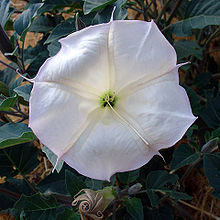At the recent Tucson event I was constantly perusing big and small and tiny displays of Perky Boxes looking for interesting minerals that I could afford. Some of the purchases were a mixed bag (in reality) of common and less common minerals with good locality/mine information but lacking names of collectors. For example, a bag of 29 Boxes with mounted micros/thumbnails for the price of $10. I figured the Perky Boxes, many with the minerals on mounting pedestals, were worth the ten bucks. Perhaps the most interesting of those minerals were crednerite (copper manganese oxide) from the Maid of Sunshine Mine in Arizona (one photo in MinDat) and wherryite (lead, copper mixed-sulfate silicate) from the famous Mammoth (Tiger) Mine in Arizona. I thought it was a good buy, even if there were four smithsonites.
However, I also picked up numerous individual specimens including a pretty, blue, doubly terminated, crystal of fluorapatite from Brazil. I nabbed on to a “one-in-the-collection” specimen of voltaite and copiapite, both ferrous-ferric sulfate minerals. This fact was interesting to me along with the tidbit that voltaite was named for Count Alessandro Giuseppe Antonio Anastasio Volta who invented the electric battery and is forever remembered for volts in battery and electrical terminology (more on batteries later). And thirdly, the specimen came from the Rio Tinto Mine in Spain that perhaps is the oldest major mine in the world.
Voltaite ( K2Fe2+5Fe3+3Al(SO4)12 · 18H2O) is a mixed valence iron compound containing both ferrous iron—with a 2+ oxidation state—and ferric iron--with a 3+ oxidation state. Copiapite (Fe2+Fe3+4(SO4)6(OH)2 · 20H2O) is also a mixed valence iron sulfate but lacks potassium. It is one of three minerals that is a purely a ferrous-ferric sulfate. To me, voltaite looks black and almost metallic with almost vitreous luster; however. MinDat states the true color is green to greenish-black with a resinous luster (not as bright and resembles the luster on plastic). What crystals I can see on my specimen resemble cubes but are often fractured and massive. MinDat states crystals are commonly octahedral and modified by the cube and dodecahedron. Although voltaite looks “hard” it has been measured as fairly soft ~3.00+.
Dark black/greenish-black voltaite with light yellow-cream and hairy halotrichite crawling around. Very tiny, orange to yellow-orange globules of copiapite are scattered around. Width FOV ~3 mm.
This ~2.0 FOV photomicrograph is interesting. Note the more "shiny" voltaite and also in the upper left quadrant two-three light gray, almost cubic, much less lustrous crystals that may be gratonite, a lead arsenic sulfosalt (Pb9As4S15). An even more problematic identification is the brownish-orange, cube-like crystal in the upper right quadrant that could be romerite, a mixed iron valence sulfate (Fe2+Fe3+2(SO4)4 · 14H2O). However, these identifications are really above my pay grade.
A brightly colored (yellow to orange ) voltaite traveling companion is copiapite, the mixed valance iron sulfate lacking potassium. It occurs as an earthy fine-granular crust or globule that is very fragile and soft (~2.5 Mohs). Crystals are rare and certainly not visible in my specimen.
Photomicrograph of yellow-cream halotrichite, yellow orange globules of copiapite, and the dark voltaite matrix.
What makes this specimen interesting is that the voltaite and copiapite appear to be under attack by a cluster of spiders (yes cluster is the correct term). Of course, these “spiders” are really halotrichite consisting of numerous radial or “globby” hair-like crystals that are yellowish to whitish encrustations or are scattered across the matrix. They are very soft (~1.5 Mohs) and brittle. Halotrichite is a single valance ferrous iron (2+) aluminum sulfate (FeAl2(SO4)4 · 22H2O).
Hair-like crystals of halotrichite. Width FOV ~1.5 mm.
My specimen came from the world- famous Rio Tinto Mine located in the Iberian Pyrite Belt (IPB) located in the southwest part of the Iberian Peninsula, comprising part of Portugal and of the provinces of Huelva and Seville in Spain. The IPB corresponds to an area of Devonian-Carboniferous volcanic and sedimentary rocks containing massive polymetallic sulfide deposits. This area forms an arcuate belt, about 150 miles long and up to 40 miles wide, trending westwards from near Seville in Spain to west-northwest in South Portugal. Both the eastward and westward extents of the belt are covered by Tertiary sedimentary rocks. The IBP contains the largest concentration of massive sulfide deposits in the world and more than 250 deposits are known. Thus far the IBP has yielded more than 2000 million tons of removed ore, and has some 400 million tons of reserve for possible exploitation. However, IBP is a classic example of the negative environmental impact caused by long-lasting and intensive mining development. Almost continued mining and working for 5000+years have modified the landscape and caused a steadily increasing pollution of water resources at a regional scale. The generation of acid waters from the erosion of massive sulfides and mine waste washing, and the drainage of mine waters have originated ecosystems (organisms living in extreme environments) unique in this world. The natural or environmental change created by human activity has created an environmental disaster. (Disclaimer: the above paragraph was cherry picked from an essay “constructed” by Microsoft Bing Co-Pilot AI. I suspect much is plagiarized. However, I wanted to see what the buzz was all about!).
The most important commodities (copper, sulfur, gold, silver, lead, tin, iron, and zinc) mined from the IBP were found in massive cupriferous pyrite; lead- and zinc-rich pyrite; various copper-rich ores such as chalcopyrite and covellite; disseminated type porphyry copper-rich ores; and gold/silver-rich oxidized ores associated with a goethite-limonite gossan. Today the mines are mostly in decline or closed. However, there are numerous proposals floating around asking for help to fund the next World Class Mine in the Iberian Pyrite Belt. Interestingly, coal is the leading mineral commodity mined today from Spain.










